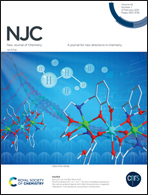Study of the removal of ciprofloxacin by Zn–GO@SA aerogel microspheres
Abstract
Graphene oxide (GO) has the advantages of a high specific surface area and great mechanical properties, which make it useful in the field of adsorption; however, it is difficult to obtain and utilize nano-size GO for adsorption and separation. In this study, zinc ion crosslinked GO and sodium alginate aerogel microspheres (Zn–GO@SA) were prepared using the ion–gel method and used for ciprofloxacin (CIP) adsorption, and this was easy to separate and collect from solutions. Methods such as SEM, EDX, FT-IR, and TGA were used for physical and chemical characterization. The adsorption properties and mechanisms were examined via static and dynamic adsorption experiments. The results indicated that the Zn–GO@SA aerogel microspheres had abundant and ordered cavities. The adsorption isotherm and kinetic data fitting results showed that the adsorption process was consistent with the Freundlich model and a quasi-second-order kinetics model. The adsorption of CIP was a multi-layer adsorption process dominated by chemical adsorption. At 308 K, the maximum adsorption capacity was 134.85 mg g−1, while increasing the adsorption temperature had an adverse effect on CIP adsorption. The results of regeneration and dynamic adsorption experiments showed that Zn–GO@SA aerogel microspheres maintained good adsorption performance after repeated use, which means they have potential for practical applications.



 Please wait while we load your content...
Please wait while we load your content...